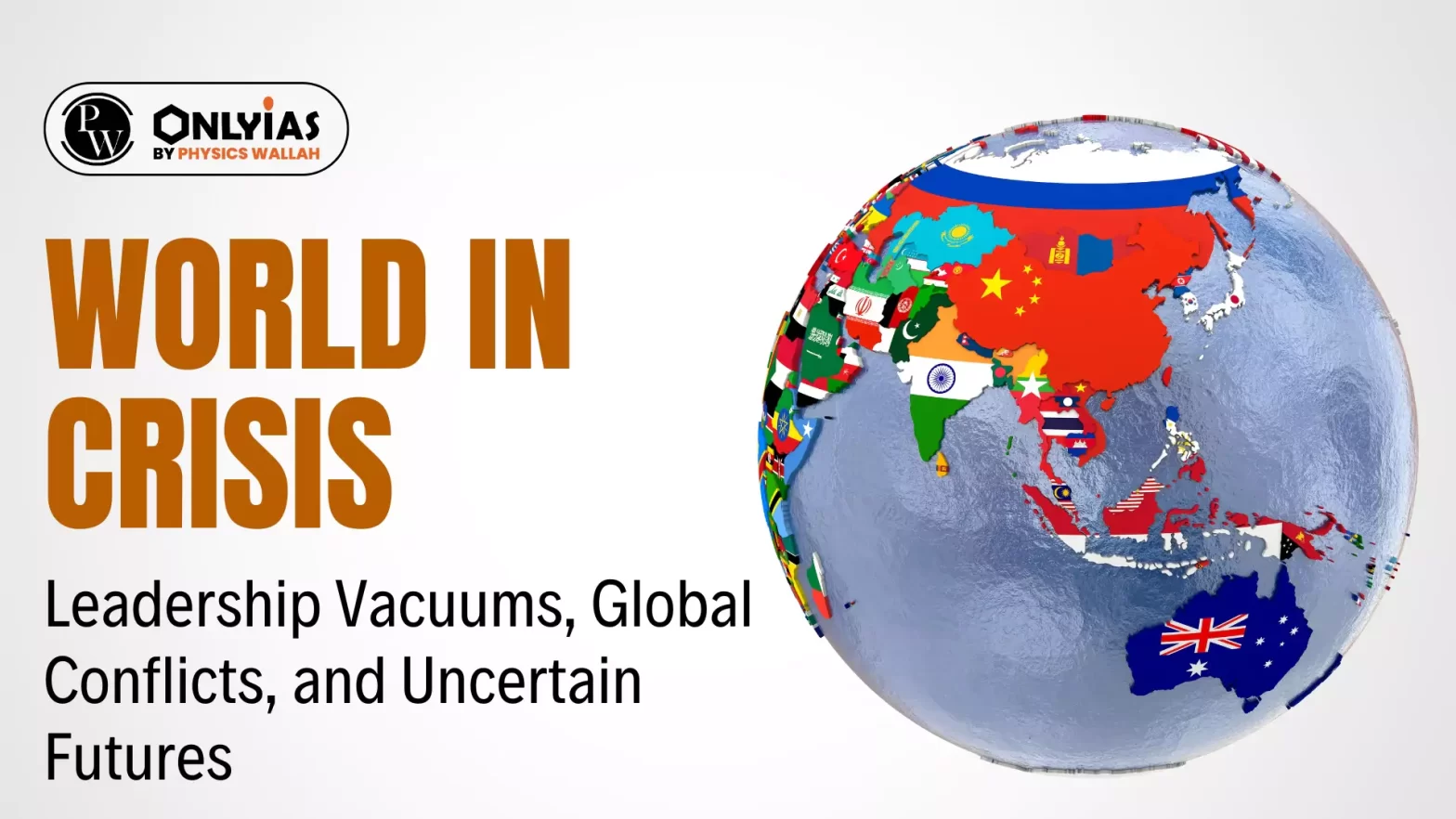Context
The World order is in shambles, with the “rules-based international order” collapsing due to a series of wars happening around the globe.
Introduction
- Emerging Alliances: New alliances are forming, but none are strong enough to maintain global peace.
- Fragile Global Peace: Many regions are experiencing chaos, with ongoing conflicts in Ukraine and Gaza.
Leadership Vacuum to Resolve Global Conflicts
- Absence of Strong Global Leadership: There’s a lack of strong, global leaders who can find solutions to pressing issues.
- Unwillingness to Compromise: Leaders like Zelenskyy, Putin, Biden, and Xi Jinping are unwilling to compromise.
- Escalation Risk: This leadership vacuum increases the risk of further escalation.
Enroll now for UPSC Online Course
Shifting Dynamics of Great Power Rivalry
- Changes in Global Power Dynamics: A new set of alliances is forming, but none are strong enough to maintain global peace. Great power rivalry seems more like a shadow play, lacking significant meaning beyond war-torn Ukraine and the volatile West Asia
- Strategic Maneuvering by Major Powers: The U.S. and China navigate a complex geopolitical terrain, employing strategic maneuvers and proxy engagements. However, these actions fail to establish enduring stability on a global scale.
- Decline of Traditional Superpowers: The U.S. struggles to overcome setbacks, diminishing its superpower status post-Afghanistan. Meanwhile, Europe leans on NATO for protection against Russia but lacks substantial influence.
- China faces economic challenges, reducing its ability to challenge the West effectively.
- China’s Economic Challenges: China’s economic woes undermine its status as a near superpower, forcing it to operate cautiously. Despite this, China forges new alliances across West Asia, forming the China-Russia-Iran axis to counter Western influence.
Economic and Technological Drivers
- Importance of Economy and Technology: World leaders overlook the significance of economies and technologies as primary drivers and disruptors in global affairs. Neglecting forecasts about future world economies, including those of developed countries, poses risks.
- Growing Significance of Oil Politics: The growing proximity between China, Russia, and Iran signals an impending upheaval in global oil politics.
- Impact of Technology on Global Dynamics: Technological advancements, especially in artificial intelligence, challenge traditional power dynamics. Smaller nations leverage AI to level the playing field, contributing to global instability.
- Diminishing Significance of Sanctions: Sanctions lose their efficacy amidst shifting alliances and power dynamics, portending a potential slowdown in global affairs.
- Potential Economic Slowdown: Economists warn of a major economic slowdown, with implications surpassing ongoing conflicts in Ukraine and Gaza.
Nuclear Arms Race and Arms Control
- Erosion of Arms Control Agreements: The erosion of arms control agreements leads to the development of new nuclear warheads and cruise missiles, heightening the risk of nuclear conflict.
- Risks of Nuclear Conflict and Doomsday Predictions: Debates ensue over the use of low-level nuclear weapons, signaling the impending dangers of a nuclear arms race and doomsday scenarios.
Conclusion
The world confronts a multifaceted and perilous scenario. Absence of robust leadership, persistent conflicts, and the looming specter of economic and technological upheaval converge to present a potentially catastrophic scenario.
Also Read: Iran Israel Conflict: Its Impact On The World
![]() 19 Apr 2024
19 Apr 2024

